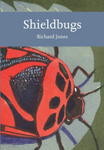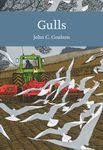By
Leon (NHBS Catalogue Editor)
13 May 2019
Written for Hardback

Beware the virus. If there is one message physician and evolutionary biologist Frank Ryan is hammering home with this book, it is this. Viruses are absolutely everywhere and more numerous even than microbes. So much so that Ryan speaks of the virosphere rather than the biosphere. But more than harbingers of disease, they are also agents of evolutionary invention. Now why does that sound familiar?
Ah yes, that was the subtitle of Michael Cordingley’s book (see my review of
Viruses: Agents of Evolutionary Invention). With
Virusphere, Ryan has written a book along largely the same lines, although it is a good deal more accessible than Cordingley’s. A good two-thirds of the book is a catalogue of disease and a history lesson in microbiology.
We are introduced to Charles Chamberland and Louis Pasteur’s germ-proof porcelain filter, which was vital in establishing that some disease-causing agents were very tiny indeed. Or the famous story of how in 1854 London, anaesthetist John Snow linked cholera to contaminated drinking water, ultimately leading to improvements in sanitation in cities. Or how we rid the world of smallpox.
But foremost it is an opportunity for Ryan to entertain the reader with facts and first-hand encounters with viral diseases: measles, flu, polio, norovirus, smallpox, hantavirus, HIV, Ebola, rabies. Some of these are the subject of dedicated books (e.g.
Virus Hunt,
Ebola: Profile of a Killer Virus, and
Spillover: Animal Infections and the Next Human Pandemic), but in case you want to read just one book, Ryan has got you covered. It is not all horror stories though. His message that the vast majority of viruses are innocuous to humans and vital components of organisms and ecosystems is echoed by Rob Dunn regarding bacteria and insects (see my review of
Never Home Alone).
Ryan is an admirer of the thinking of Lynn Margulis and mentions her ideas on symbiosis and holobionts in several places (the latter term refers to the whole formed by two or more interacting partner species, see also
Symbiosis as a Source of Evolutionary Innovation). The idea that viruses and hosts live in a symbiotic relationship – encompassing parasitism, commensalism, and mutualism – is an idea he has been pushing pretty relentlessly for a few decades now (see his previous books
Virus X,
Darwin’s Blind Spot, or
Virolution). He teases the reader with this idea from the start, but it is not until chapter 16 that he finally develops it. Judging from the many references each chapter suddenly receives (and the numerous notes I was taking), this is really where the book gears up.
Biologists have typically portrayed viruses as parasites that straddle the border between life and non-life. Ryan goes against that grain, preferring to pull viruses into the domain of the living. Yes, they depend on their hosts for their replication, but virtually all organisms (bar the rare autotrophic bacterium) depend on other living organisms in the web of life. The virus particles that burst out of an infected cell and linger in the environment, waiting for a new host? Ryan likens them to dormant seeds rather than inanimate matter. He ends the book making a case for considering viruses as the fourth domain of life (in addition to the three that Carl Woese defined, see my review of
The Tangled Tree).
I went into this a bit sceptical, but Ryan gives some fascinating examples. Starting with a scene straight out of the pen of Matt Simon, that of a wasp injecting eggs into the living tissue of a caterpillar (see my review of
Plight of the Living Dead), Ryan adds the observation that there is a third partner involved. To turn the caterpillar into a zombie larder requires a virus that is injected along with the wasp’s eggs. A nice example of mutualism, where both virus and wasp profit from each other. And what of the bacteriophages (viruses that infect bacteria) that release both a persistent toxin and a short-lived antitoxin? This leaves the host with no option but to accept the virus. If it kills the virus, it will succumb to the toxin.
We furthermore know that viral genes become incorporated in the genome of hosts. Especially retroviruses such as HIV-1 do this (more on those in
Discovering Retroviruses). The striking bit, as Ryan explains, is that some of these inserts have been repurposed by hosts as regulatory regions to control the transcription of their own genes. And the research he mentions that shows that such retroviral material has been implicated in the evolution of the mammalian placenta caused me to do a double take on that paragraph. I’m afraid that Cordingley already blew my mind with the concept of viruses as quasispecies (something which Ryan mentions, but Cordingley did a better job of explaining). Curiously, Ryan, too, completely omits any mention of CRISPR (see my review of
A Crack in Creation). This is another striking example of incorporation of viral DNA in the host’s genome, in this case post-infection to be used in future host immune responses.
Ryan’s writing has its stylistic idiosyncrasies. Introducing viruses, he asks how we can study such minuscule entities, suggesting “that there is an obvious guide [...] whose perspective has only recently been opened up to us in wonderful detail through the deepest penetration of the living world by the enlightenment of modern scientific techniques” (p. 5). On parents who have children with a fever, Ryan remarks: “How natural that our hearts should falter with the beloved child temporarily tossing in a perspiring fever [...]” (p. 33). I cringed a bit at his mention of readers as “ordinary folk”, which is only mildly better than the patronising “common man” I sometimes come across. Throughout the book, his colleagues are esteemed, distinguished, eminent; the ideas novel, astonishing, profound. I personally found it a bit grandiose and self-aggrandising in places. It will no doubt depend on your taste in writing what you make of that, but it distracted somewhat from my pleasure in reading this book.
Because, make no mistake,
Virusphere is a fascinating book that is well structured, with short, absorbing chapters. As Ryan makes clear, in many areas we have only started scratching the surface, and the potential of new techniques such as metagenomics (the study of genetic material recovered directly from environmental samples, really useful to find viruses) still has to be fully appreciated. Whether future researchers will remember Ryan as a pioneer in the vein of Margulis remains to be seen, but
Virusphere makes an engrossing and fervent argument that he is on to something.




































